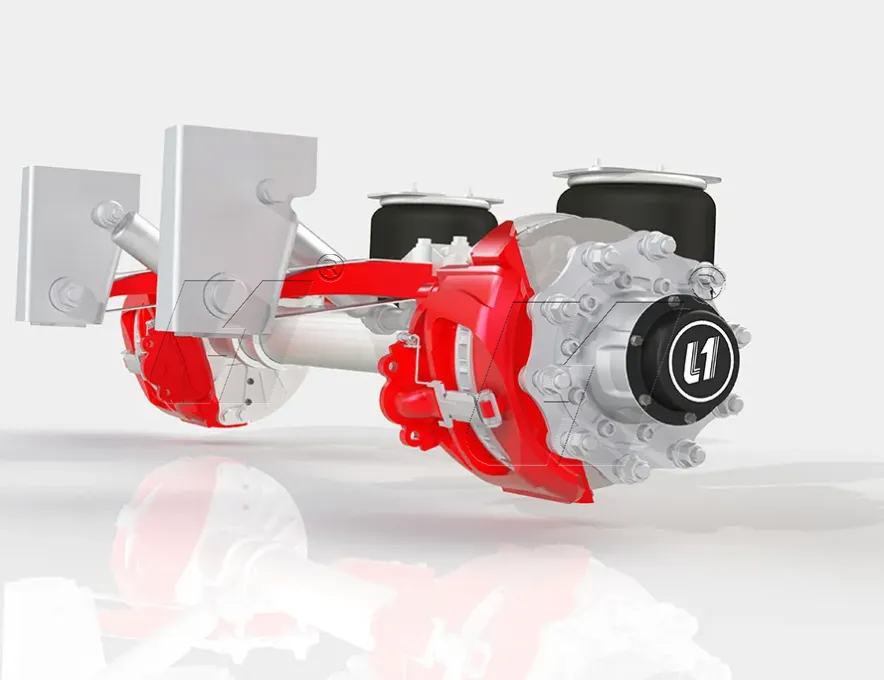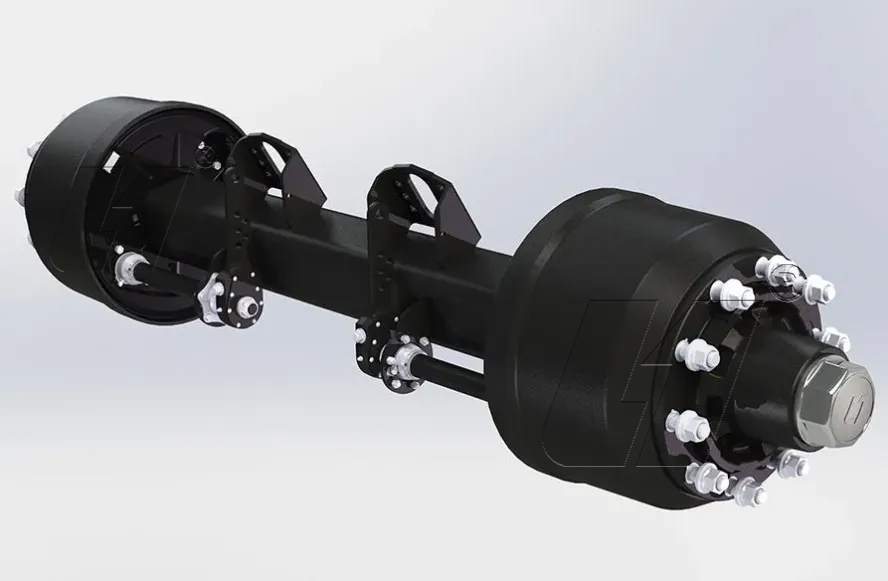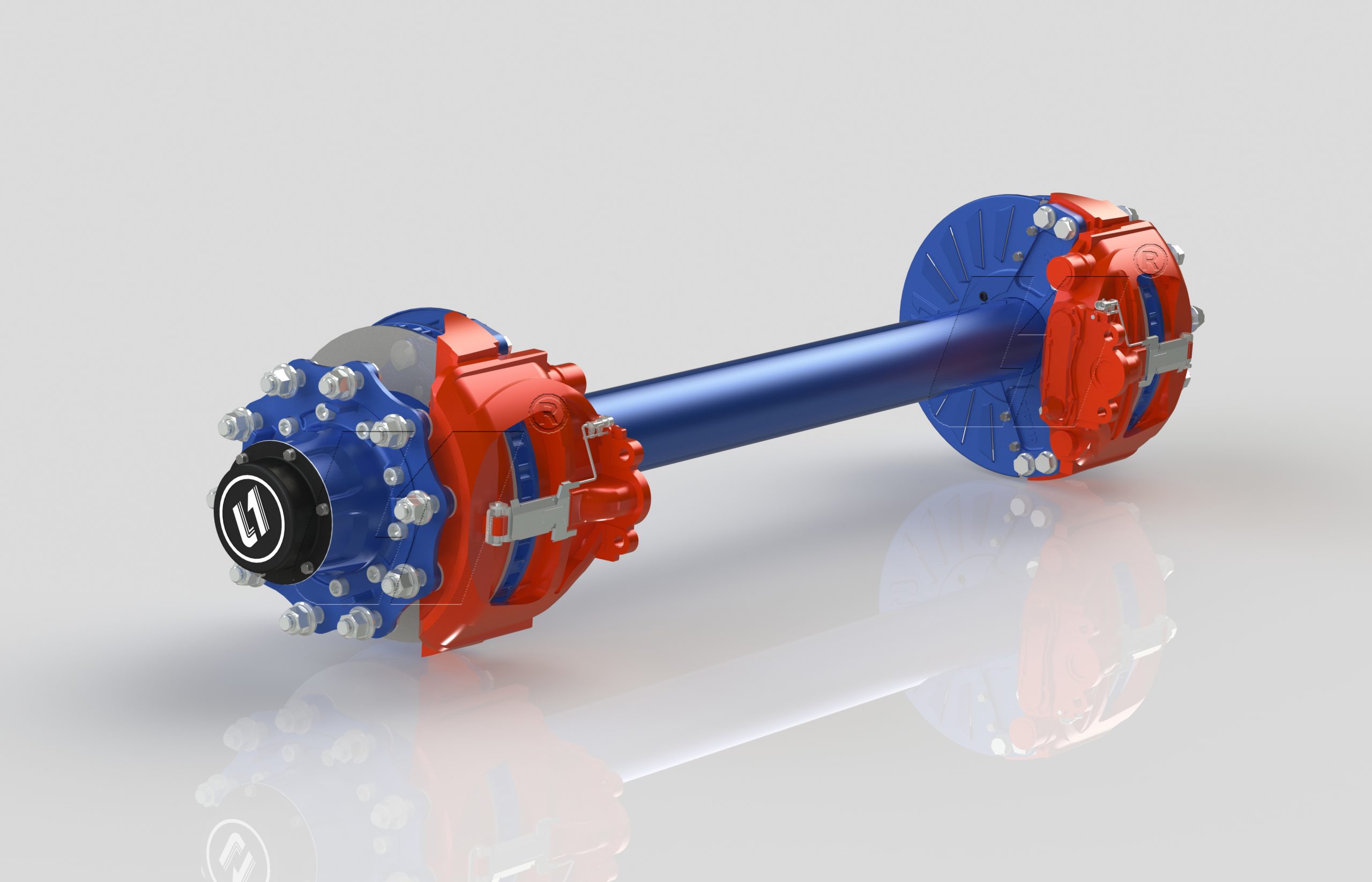How Do You Determine Axle Placement?
Determining the proper axle placement is a crucial step in designing and constructing vehicles, trailers, and other wheeled equipment. The correct axle placement ensures optimal weight distribution, stability, maneuverability, and compliance with legal requirements. Several factors come into play when determining axle placement, including vehicle type, load distribution, the center of gravity, regulatory guidelines, and design considerations. Here’s an overview of the key considerations involved in determining axle placement:
Vehicle Type and Configuration:
The type of vehicle and its intended purpose play a significant role in determining axle placement. Different vehicles, such as cars, trucks, trailers, and recreational vehicles, have varying weight distributions and handling characteristics. The number of axles and their positioning depend on the vehicle’s design and intended use.

Disc Brake Wheel Axle For Semi Trailer
Load Distribution and Weight Distribution:
The distribution of the load or cargo being carried is a critical factor in determining axle placement. The goal is to achieve a balanced weight distribution between the front and rear axles to ensure stability and prevent excessive stress on any single axle. The load should be distributed in a way that keeps the center of gravity as low as possible to minimize the risk of rollovers or loss of control.
Center of Gravity (CoG):
The location of the center of gravity is crucial for determining axle placement. The center of gravity is the point where the vehicle’s weight is concentrated. Placing the axles closer to the center of gravity helps maintain stability and prevent excessive weight transfer during acceleration, braking, or turning maneuvers. The center of gravity is influenced by various factors, including vehicle design, load distribution, and cargo weight.

German Drum Wheel Shaft For Heavy Duty Trailer
Regulatory Guidelines and Legal Requirements:
Regulatory guidelines and legal requirements established by local authorities or transportation departments play a significant role in determining axle placement. These guidelines often specify the maximum allowable axle loads, axle spacing, and overall vehicle weight. Adhering to these regulations is essential to ensure road safety, prevent damage to infrastructure, and avoid penalties or fines.
Turning Radius and Maneuverability:
The placement of axles affects the turning radius and maneuverability of a vehicle. The distance between the axles affects the vehicle’s ability to make sharp turns without tire scrubbing or trailer interference. Long wheelbase vehicles generally have larger turning radii, while shorter wheelbases provide better maneuverability.
Suspension Type and Design:
The type of suspension system used in a vehicle also influences axle placement. Different suspension systems, such as leaf springs, coil springs, air suspension, or independent suspension, have varying effects on weight distribution and axle placement. Suspension characteristics, including spring rates, damping, and articulation, should be considered when determining the axle placement.

Disc Brake Wheel Axle For Semi Trailer
Design Considerations and Practical Constraints:
In addition to the factors mentioned above, there are several design considerations and practical constraints that influence axle placement. These include the chassis frame design, available space for mounting axles, compatibility with the drivetrain system, clearance requirements for tires and fenders, and the intended use of the vehicle (e.g., off-road capability or specialized applications).
Determining the optimal axle placement often involves a combination of engineering calculations, computer simulations, and real-world testing. Computer-aided design (CAD) software and finite element analysis (FEA) simulations can help analyze weight distribution, stress distribution, and vehicle dynamics to optimize axle placement. Additionally, physical prototypes and on-road testing may be conducted to evaluate the vehicle’s performance, stability, and handling characteristics under various conditions.
It’s important to note that axle placement is a complex engineering task, and it’s recommended to consult with experienced engineers, vehicle manufacturers, or specialists in the field to ensure compliance with applicable regulations and achieve the desired performance and safety standards for a specific vehicle or equipment design.
For more information, please contact us. We will provide professional answers.


